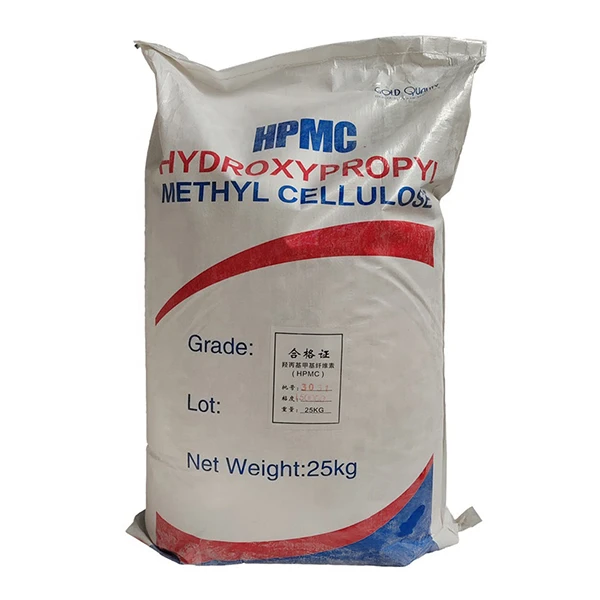The Significance of HPMC Cellulose in Modern Applications
Hydroxypropyl methylcellulose (HPMC), a derivative of cellulose, has gained significant attention in various industries due to its remarkable properties. As a non-ionic, water-soluble polymer, HPMC is extensively used in food, pharmaceuticals, cosmetics, and construction. This article delves into the characteristics, applications, and benefits of HPMC cellulose, highlighting its importance in modern applications.
What is HPMC Cellulose?
HPMC is synthesized by etherifying cellulose fibers, which are derived from natural sources like wood and cotton. The process involves substituting some of the hydroxyl groups of cellulose with hydroxypropyl and methyl groups. This modification enhances its solubility in water, making HPMC a versatile compound suitable for many applications. HPMC’s chemical structure provides it with unique rheological properties, enabling it to function as a thickening agent, emulsifier, and stabilizer.
Applications of HPMC Cellulose
1. Pharmaceutical Industry HPMC is a crucial component in the pharmaceutical sector. It is commonly used as a binder in tablet formulations, improving the stability and delivery of active ingredients. Additionally, due to its hydrophilic nature, HPMC is utilized in controlled-release formulations. By forming a gel upon contact with water, it slows down the release of drugs, allowing for prolonged therapeutic effects. Furthermore, HPMC is often used in ophthalmic solutions and as a suspending agent.
2. Food Industry In the food industry, HPMC serves several purposes. It is employed as a thickener and emulsifier in various food products, including sauces, dressings, and baked goods. Its ability to retain moisture helps improve the texture and shelf life of food products. Additionally, HPMC is often used as a fat replacer, enabling the production of low-fat and reduced-calorie food items while maintaining desirable sensory attributes.
3. Cosmetic and Personal Care Products The cosmetic industry benefits from HPMC's excellent film-forming and thickening properties. It is found in lotions, creams, shampoos, and conditioners, where it helps to stabilize emulsions and enhance the product’s texture. HPMC can also form a protective film on the skin, which can improve the feel and appearance of cosmetic products.
4. Construction Industry HPMC plays a crucial role in construction materials. Used as an additive in cement and mortar formulations, it enhances workability, adhesion, and water retention. As a result, HPMC contributes to the durability and performance of construction materials, making it indispensable in modern building practices.
hpmc cellulos

5. Industrial Applications Beyond the aforementioned industries, HPMC finds applications in various other fields, including paints, coatings, and adhesives. Its ability to improve viscosity and stabilize suspensions makes it a valuable component in these products, providing optimal performance and enhanced characteristics.
Advantages of HPMC Cellulose
The unique properties of HPMC cellulose confer several advantages
- Non-Toxic and Biodegradable HPMC is derived from natural cellulose, making it a safe option for various applications, especially in food and pharmaceuticals. Its biodegradability is an added benefit, supporting environmental sustainability. - Versatile and Functional HPMC can be tailored to meet specific requirements by altering the degree of substitution or molecular weight. This versatility allows manufacturers to create products suited to various applications, thereby meeting diverse consumer needs.
- Improved Texture and Stability In food and cosmetic formulations, HPMC helps achieve a desirable texture while stabilizing emulsions. Its moisture-retaining properties enhance the quality and longevity of products.
- Enhanced Drug Delivery In pharmaceuticals, HPMC's ability to control drug release and improve bioavailability makes it a preferred ingredient in many formulations, leading to better therapeutic outcomes.
Conclusion
HPMC cellulose is a multifunctional compound that plays a vital role across various industries. Its unique properties—solubility in water, biocompatibility, and versatility—make it a valuable ingredient in pharmaceuticals, food, cosmetics, construction, and many other applications. As technology advances and new formulations are developed, the significance of HPMC cellulose is likely to grow, solidifying its place as a key player in modern applications. The continued research and innovation in this field promise to unlock further potential, contributing to a sustainable and efficient future.
-
The Application and Significance of Construction RdpNewsMay.19,2025
-
Industrial Grade HpmcNewsMay.19,2025
-
Building Coating Adhesive Building Coating Adhesive HpmcNewsMay.19,2025
-
Application Of Hpmc For Detergent For Detergent In DetergentsNewsMay.19,2025
-
Application Of Hpmc Cellulose In Cement-Based MaterialsNewsMay.19,2025
-
Application Of High Quality Hpmc For Construction In The Field Of ConstructionNewsMay.19,2025




